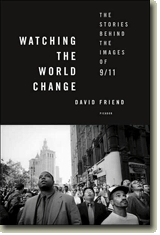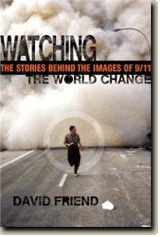« Previous · Home · Next »
June 29, 2009
THE IRAN SHOWDOWN: HOW WE NOW VIEW BREAKING NEWS
On-the-spot photography and video – taken by citizens on the frontlines of a crisis - greatly enhanced the world’s understanding of the London bombings, the Asian tsunami, the Lebanese-Israeli conflict, the Burmese crackdown, and several other incidents since the attacks of September 11. In today’s New York Times, journalist Brian Stelter has a solid piece about how the Iran post-election showdown has gone one step beyond: radically altering how breaking international news is processed due to the essential nuggets of information provided by citizen journalists. These scrub cub reporters uploaded photos, videos, blog posts, and text-messages, and used Twitter, YouTube, and the vast array of social-networking sites as vital lifelines to the outside world. They sometimes worked in consort, as well, with traditional media companies, whose news sites and blogs and online photo-and-video desks were receptacles of real-time submissions (all questions asked later).
Writes Stelter: “The combination amounts to the biggest embrace yet of a collaborative new style of news gathering — one that combines the contributions of ordinary citizens with the reports and analysis of journalists….
“As visas expired, many journalists packed up, and the ones who stayed were barred from reporting on the streets. In a news vacuum, amateur videos and eyewitness accounts became the de facto source for information. In fact, the symbol of the protests, the image of a young woman named Neda bleeding to death on a Tehran street, was filmed by two people holding camera phones.”
Stelter quotes Matthew Weaver of the Guardian, in the U.K., “[When rallies and conflicts occur] first the tweets come, then the pictures, then the YouTube videos, then the wires. It’s extraordinary…. [What people are saying] at one point in the day is then confirmed by more conventional sources four or five hours later.”
Adds Stetler, picking up on the observations of Nico Pitney, of the Huffington Post, “[Minute-by-minute blogs] produce a synthesis of professional reporting and reliable amateur material. Essentially the news tips that reporters have always relied upon are now being aired in public.”
The entire news landscape has changed, thanks to technology and globalization - and thanks to the thirst for news and, in many cases, the thirst for democratic reform - brought about by the rise of 24-7 news, digital imagery, and the Internet.
(It's hard to fathom, but on 9/11, there were no camera-equipped cell phones, no YouTube, no videoclips embedded in blogs, no Twitter. Facebook was in its infancy; search engines barely in their adolescence.)


